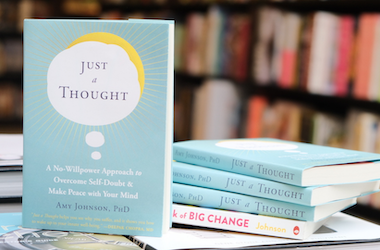
You’ll often see or hear people talking about the benefit of having a quiet mind. I talk about this too, but recently I’ve been trying to get more clarity around it and specifically what it actually means!
It’s pretty impossible to maintain a quiet mind for very long at all. We can’t control what thoughts, beliefs, ideas, sensations etc will arise in any moment.
I’ve called this post the ‘Paradox of Tranquility’ because of this discrepancy between the apparent benefits of having a quiet mind, and the question of whether it’s actually possible.
A Simple Test
If you settle into this moment and ask yourself ‘what will my next thought be?’, see what happens for you. I think generally this helps slow the mind down and you can maybe ‘see’ that the mind doesn’t have an answer for that question.
This is a useful observation. How can a mind possibly know what is going to happen next? Noticing this allows us to question the validity, or accuracy of the mind’s created beliefs and ideas about life, ourselves and most significantly, what may or may not happen next.
I think clarity comes from being more mindful, in each moment, to what’s here now and most importantly, asking how significant or meaningful what appears to be here now actually is.
Mindful Moments
A lot of my work already points to being more mindful in each moment, which allows a tiny pause, or space, for us to consider our next step. I use the visual of an inverted, or upside down triangle to point to us settling into the moment of now. This moment of now is at the point or tip at the bottom of the inverted triangle.
The top of an inverted triangle is a broad line, stretching from left to right. This can visually represent the surface level of life that is more mind-identified. This is where conditioned beliefs influence us at a more automatic (and arguably more mindless*) level of awareness.
The direction from the top to the bottom of the inverted triangle is a continuous downward, or deepening journey. This is a journey of awareness of the eternal present moment. The point of this direction, or deepening awareness, is to free ourselves from the unnecessary mental suffering that arises from staying at the surface level of life.
Mind the Gap
The broader top of the shape also visually shows a ‘gap’ stretching between left and right, which can represent differences in opinion or extreme views (as well as the concept of time.) This gap can create a feeling of tension, when we can’t settle or feel comfortable because of divergent or opposing opinions (with others, or within ourself) – or because the mind is past or future focussed.
This is actually useful, because the tension can alert us to the fact that we are operating at the mind level. With awareness of this, we can pause and drop from head to heart, to the more peaceful present moment, slowing down to take life one step at a time.
It seems that this simply quietens the mind to one point of attention. This allows the snow-globe of mental activity to settle down.
I’m not saying that the exact present moment only contains positives. It just feels more peaceful because the pace is slower, and we’re simply recognising or become more aware of what’s actually here now.
It’s important to emphasis again that, by default, really noticing what is here, now must include everything (that’s here, now!)
Contrast Illuminates
I think there’s something pretty important here about the nature of space. It’s allowing contrast to show what’s here now. An easy example is black ink showing up on white paper, without the completeness of contrasting ink on paper, the written or typed words couldn’t be seen (if we were to use white ink on a white background for example.)
This really is about being open and curious and allowing all ‘doors’ to be open, so everything can flow through. That feels spacious and all inclusive to me, letting go of resistance, or insistence that things should be any different.
I’ve been talking to someone about mindfulness via email recently, and he said he could see the potential benefits, but that it seems so hard. To me, mindfulness is simply noticing, or being aware in the moment. Since the present moment is all that exists, we can just notice what’s here now with open curiosity. It’s actually so simple and doesn’t involve a practice or technique, which is where I think the concept of mindfulness can be overcomplicated.
Perhaps this is what ‘a quiet mind’ means – not one that’s silent, but one that’s open and curious and doesn’t take everything so seriously and personally. That feels lighter and attainable to me.
Footnote:
* ‘Mindless’ is the term Ellen Langer uses in contrasting not being mindful with being mindful. Her decades of research on the influence of mindfulness on our wellbeing is fascinating. Interestingly, she talks about mindfulness being the ‘simple process of actively noticing things’ (see “The Mindful Body”, Introduction, page xvii)
You can learn more about Suzie here: https://www.sychangecoach.com/












